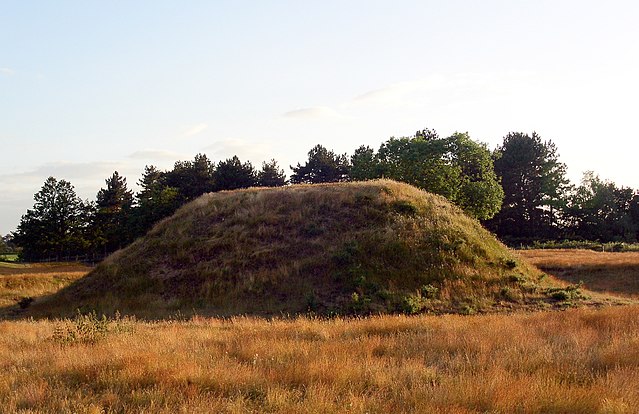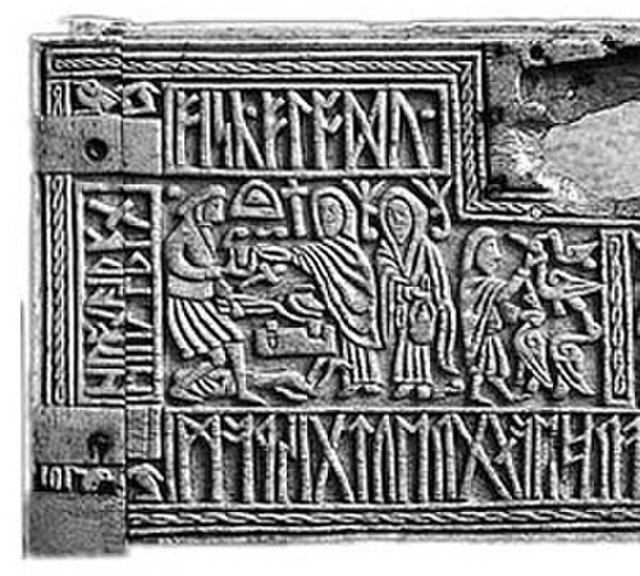Burial in Anglo-Saxon England
Burial in Anglo-Saxon England refers to the grave and burial customs followed by the Anglo-Saxons between the mid 5th and 11th centuries CE in Early Mediaeval England. The variation of the practice performed by the Anglo-Saxon peoples during this period, included the use of both cremation and inhumation. There is a commonality in the burial places between the rich and poor – their resting places sit alongside one another in shared cemeteries. Both of these forms of burial were typically accompanied by grave goods, which included food, jewelry, and weaponry. The actual burials themselves, whether of cremated or inhumed remains, were placed in a variety of sites, including in cemeteries, burial mounds or, more rarely, in ship burials.
Inhumation at Sutton Hoo under archaeological excavation.
Anglo-Saxon cremation was open and public, like that in contemporary South Asia (pictured).
Funerary urn from the Snape Anglo-Saxon Cemetery.
Mound 2 is the only Sutton Hoo tumulus to have been reconstructed to its supposed original height.
Anglo-Saxon paganism, sometimes termed Anglo-Saxon heathenism, Anglo-Saxon pre-Christian religion, or Anglo-Saxon traditional religion, refers to the religious beliefs and practices followed by the Anglo-Saxons between the 5th and 8th centuries AD, during the initial period of Early Medieval England. A variant of Germanic paganism found across much of north-western Europe, it encompassed a heterogeneous variety of beliefs and cultic practices, with much regional variation.
The right half of the front panel of the 7th-century Franks Casket, depicting the Anglo-Saxon (and wider Germanic) legend of Wayland the Smith
An early 20th-century depiction of Bede, who provides much of the textual information on Anglo-Saxon paganism. Painting by James Doyle Penrose.
Roseberry Topping in North Yorkshire, once known as the 'Hill of Óðin'
A 1908 depiction of Beowulf fighting the dragon, by J. R. Skelton.








